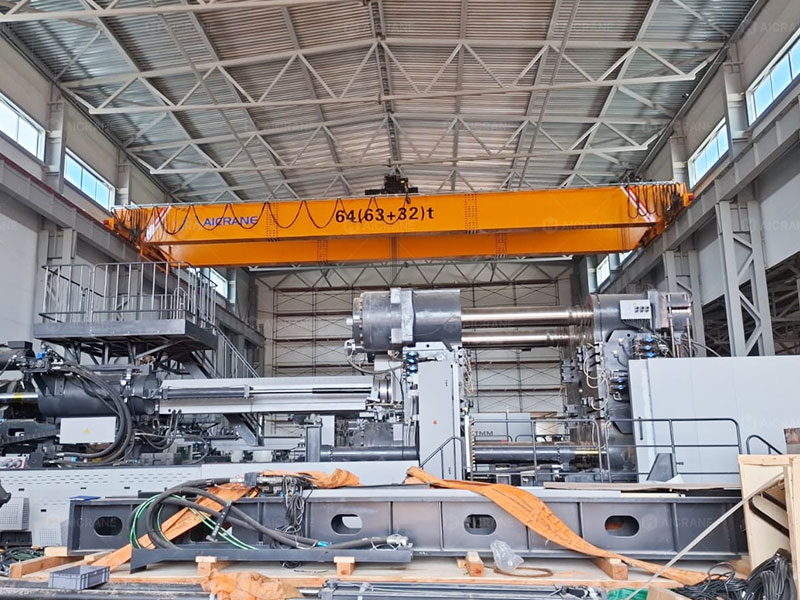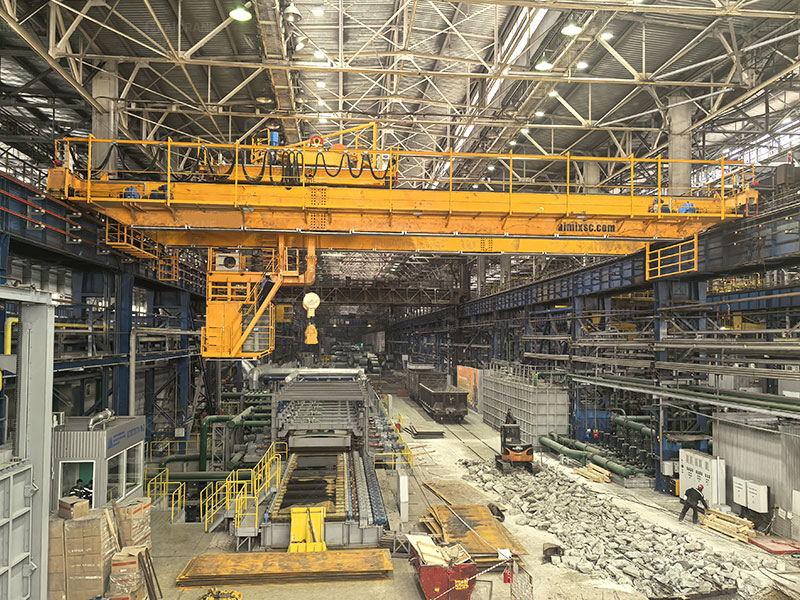Selecting the right overhead crane is a critical decision for any manufacturing facility, warehouse, or construction site. Overhead cranes are essential for lifting and transporting heavy loads efficiently, but their cost can be significant, both in terms of upfront investment and ongoing operational expenses. By adopting strategic approaches to crane selection, businesses can save money without compromising safety, reliability, or productivity. This article explores cost-saving strategies when selecting overhead cranes, covering everything from design choices to lifecycle management.

1. Assess Your Actual Load Requirements
One of the most common mistakes in crane selection is overestimating load capacity. Choosing an overhead crane for sale with a higher lifting capacity than required leads to unnecessary costs in materials, engineering, and installation.
Strategies to save costs:
-
Conduct a detailed assessment of your maximum and average load requirements.
-
Factor in potential future load increases, but avoid excessive overdesign.
-
Consider using cranes with modular or scalable capacities, which allow upgrades as your operations grow.
By selecting a crane that closely matches your operational needs, you avoid overspending on unnecessary specifications.
2. Choose the Right Crane Type
Overhead cranes come in various types, including single girder, double girder, gantry, and bridge cranes. Each type has unique advantages and cost implications.
Cost-saving tips:
-
Single girder cranes are generally more economical than double girder cranes and suitable for light to medium loads.
-
Double girder cranes are ideal for heavy loads or high lifting heights, but may be unnecessary for lighter operations.
-
Gantry cranes can be a cost-effective solution for outdoor or flexible operations, eliminating the need for permanent overhead structures.
Selecting the appropriate overhead crane type ensures you only pay for features that align with your operational requirements.
3. Optimize Span and Lifting Height
Crane span and lifting height directly affect material, engineering, and installation costs. Longer spans and higher lifts require more steel, larger motors, and more robust structural support.
Ways to reduce costs:
-
Minimize crane span by strategically placing crane rails or support beams.
-
Adjust lifting height to meet operational needs rather than overdesigning.
-
Consider multi-crane operations with shorter spans rather than a single excessively long crane.
Proper planning in this area can significantly reduce initial investment and ongoing energy costs.

4. Standardize Components and Controls
Custom components and advanced control systems can drive up overhead crane costs. While automation and high-tech options offer advantages, not all operations require them.
Strategies for cost control:
-
Use standardized motors, hoists, and controls where possible.
-
Select conventional pendant or remote control systems unless automation is necessary.
-
Avoid unnecessary customizations that increase procurement and maintenance costs.
Standardization simplifies maintenance, reduces spare parts inventory, and lowers long-term costs.
5. Evaluate Material and Construction Quality
While it may be tempting to select a lower-cost crane with cheaper materials, this often leads to higher maintenance and shorter lifespan, increasing total cost of ownership.
Cost-saving considerations:
-
Choose high-quality steel and structural components that resist wear and corrosion.
-
Evaluate the long-term durability rather than the lowest initial price.
-
Consider protective coatings for outdoor cranes to minimize weather-related damage.
Investing slightly more upfront in quality materials often leads to savings in repairs, downtime, and replacement costs.
6. Plan for Energy Efficiency
Overhead cranes are heavy-duty equipment that consumes significant electrical power, especially in high-duty cycles. Energy-efficient designs can reduce operating expenses.
Cost-saving approaches:
-
Select cranes with energy-efficient motors and hoists.
-
Consider regenerative braking systems to recover energy.
-
Optimize travel speeds and motor sizing to balance efficiency and productivity.
Energy-efficient cranes reduce electricity bills and extend motor life, providing long-term savings.
7. Incorporate Preventive Maintenance Planning
Maintenance is a critical factor in total crane cost. Unplanned downtime can be costly in terms of lost production and emergency repairs.
Strategies to minimize costs:
-
Choose cranes with easy access to components for maintenance.
-
Implement a preventive maintenance schedule from day one.
-
Use durable components to reduce frequency of replacements.
Preventive maintenance reduces repair costs, increases safety, and prolongs crane lifespan.
8. Consider Future Flexibility
Your facility’s operations may evolve over time. Selecting cranes that offer flexibility can avoid costly replacements.
Cost-saving measures:
-
Opt for cranes that can be upgraded for higher capacity or automation.
-
Modular designs allow adding spans, hoists, or trolleys without replacing the entire crane.
-
Multi-use cranes that handle various lifting tasks reduce the need for additional equipment.
Flexibility in design ensures your crane remains a cost-effective solution for years to come.
9. Analyze Total Cost of Ownership
Focusing solely on the purchase price can be misleading. The total cost of ownership (TCO) includes installation, energy, maintenance, downtime, and potential future upgrades.
Cost-saving insights:
-
Compare cranes based on TCO, not just initial purchase price.
-
Factor in training, spare parts, and energy consumption.
-
Assess reliability and lifespan to avoid frequent replacements.
Understanding the full financial impact of a crane helps you make more informed and economical decisions.
10. Work with Experienced Suppliers
Selecting the right eot crane supplier can make a significant difference in both upfront costs and long-term expenses. Experienced suppliers offer reliable products, proper sizing advice, and efficient installation services.
Cost-saving tips:
-
Choose suppliers who provide full technical support and after-sales service.
-
Leverage supplier expertise to select optimal crane types, capacities, and features.
-
Consider warranty and service agreements to reduce unexpected expenses.
A knowledgeable supplier helps avoid costly mistakes and ensures the crane meets your operational requirements efficiently.
Conclusion
Selecting an overhead crane is a complex process, but careful planning and strategic choices can lead to significant cost savings. By accurately assessing load requirements, choosing the right crane type, optimizing span and height, standardizing components, prioritizing quality and energy efficiency, planning preventive maintenance, and considering flexibility, businesses can reduce upfront investment and minimize long-term operating costs.
Additionally, working with experienced suppliers and analyzing the total cost of ownership ensures that your overhead crane delivers maximum value while avoiding unnecessary expenses. With these cost-saving strategies, facilities can make informed decisions, enhance productivity, and achieve a strong return on investment in their lifting operations.